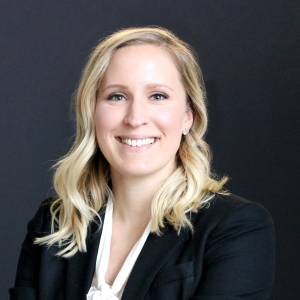When I was an audiology student, there was not one class on how to manage the financial aspects of a clinic, let alone clinic ownership. Even for those professionals who are not yet interested in or ready for self-employment, managing a hearing clinic comes with the need to understand finances and, if you don’t, this can greatly limit your upward mobility. When I went into business for myself this was a big wake-up call. In this blog post, I want to share some of the basics of financial reports as well as provide resources for those who want to learn more. We will delve into the importance of financial literacy for clinic owners and managers and highlight the key elements they need to understand to ensure their clinic’s financial health.
What are Financial Statements?
All modern businesses, big and small, use bookkeeping software that categorizes every financial transaction, including purchases, sales, and more. From these transactions, reports known as financial statements can be generated by the business’ accountant. Legally, companies are required to file specific reports with the government, typically on an annual basis, to remain compliant with their taxes and to continue their operations. These reports also provide insight into a business’ performance, detailing where and how money is spent and enabling business managers to make informed decisions. Although the government mandates annual submissions, many companies produce these reports more frequently, either monthly or quarterly, to discuss with managers, staff, investors, and others, and to facilitate decision-making. I believe that every hearing care professional should acquaint themselves with the fundamentals of these reports, namely, the balance sheet and the income statement, which is commonly called the profit & loss statement.
The Balance Sheet
The balance sheet provides a snapshot of a company’s financial position at a specific moment in time. It details what the company owns (assets), what it owes (liabilities), and the residual equity.
The first section of a balance sheet is the assets section. This represents the resources owned or controlled by a company, which hold economic value and are expected to offer future benefits. These assets aren’t limited to just cash. They can also include items like sound booths, audiometers, and other diagnostic equipment.
The second section is liabilities. Liabilities are what the company owes. Like assets, liabilities on a balance sheet are divided into two main categories: current liabilities and non-current liabilities. Bank loans, staff payroll, and accounts payable to suppliers are examples of liabilities.
The final section of a balance sheet is the equity section, which represents the ownership interest in the company.
A balance sheet offers the owner or manager insight into the financial health of a company, whereas an income statement looks more at recent financial performance. Consider, for instance, a company with $140,000 worth of equipment, $10,000 in cash, but also a loan of $120,000 taken to purchase that equipment. Compare this to another company that has $120,000 of equipment, $30,000 in the bank, and only $10,000 in debt. They both own the same $150,000 in assets, but which company is healthier financially? Which company would you feel confident in helping expand to a second location, and which would you suggest focuses on paying down its debt instead? These are the types of decisions which can be made with a better understanding of the balance sheet.
The Income Statement
So, what exactly is an income statement or profit and loss statement? A P&L is a financial report that outlines a company’s revenues, costs, and expenses over a specific period. Typically, this report is generated monthly, quarterly, and annually. It allows for comparisons between different periods, with its main objective being to demonstrate a company’s profitability during a set timeframe. This statement provides insights into a company’s performance, showing its operational profitability, the cost of goods sold, and the total operational expenses.
At its core, the P&L follows a simple formula. The statement begins with the income, subtracts the “cost of goods sold” (which, in our industry, often represents the cost paid for items like hearing aids), and then deducts operational expenses such as rent, wages, utilities, and so forth. What remains is either the profit or, and hopefully not, the loss. The P&L essentially provides a clear picture of whether your clinic is generating profits and specifically, where funds are being allocated.
Beyond this basic overview, the report allows for deeper financial analyses. You can delve further into aspects of your business by calculating metrics like the gross profit margin, operating income, or net income.
Want to learn more?
Financial literacy is an indispensable skill for healthcare clinic owners. It equips them to adeptly traverse the intricate financial terrain of the healthcare industry. From budgeting and revenue cycle management to compliance, cash flow, and investment strategies, financial literacy lays the foundation for a prosperous and fiscally resilient healthcare clinic. I firmly believe that by investing in your financial education, you’re simultaneously enhancing your potential for career advancement.
I’ve curated a series of courses that delve deeply into this subject: “Introduction to Financial Accounting,” “Introduction to the Balance Sheet,” and “Introduction to Profit and Loss.” Each course provides detailed insights into its respective statement, complete with practical examples, all within a concise 15-minute timeframe. These modules are designed to be stackable, allowing for a comprehensive learning experience when taken together. You can access them on the “Learn On” platform offered by Pacific Audiology Group, available in all regions.
If you found this blog helpful, please share it on social media!





